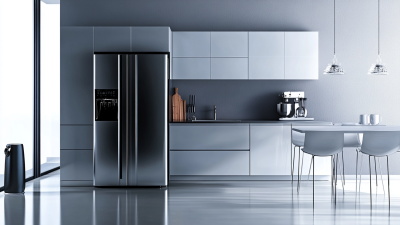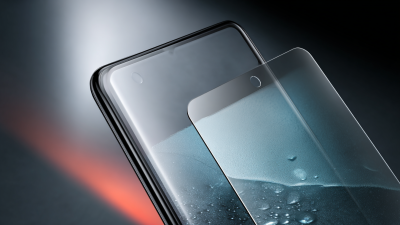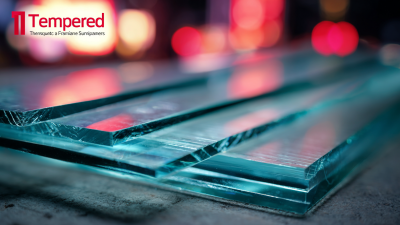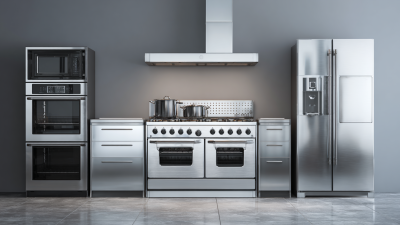

Tempered glass for solar panels offers superior resistance to thermal shock and mechanical stress, making it a preferred choice in various environmental conditions.
Furthermore, a study conducted by the National Renewable Energy Laboratory (NREL) emphasizes that the quality of the tempered glass used in solar panels directly correlates with the energy conversion efficiency. As the solar energy market continues to grow exponentially, with an expected CAGR of over 20% in the coming years, selecting the right tempered glass has become paramount for manufacturers and installers alike.
This guide will provide comprehensive insights into the different types of tempered glass available, their properties, and how to make informed decisions that will ensure optimal performance and longevity for solar panel installations.
Tempered glass plays a crucial role in enhancing the performance and durability of solar panels. It is engineered through a process that involves heating and rapid cooling, which increases its strength compared to standard glass by up to five times. According to a report by the National Renewable Energy Laboratory, tempered glass is vital for improving solar panel resilience against environmental factors such as hailstorms and high winds, which can cause substantial damage to less durable alternatives.
Moreover, the transparency of tempered glass is a significant factor that contributes to the efficiency of solar panels. A study from the Solar Energy Industries Association indicated that the optimal glass can ensure up to 92% light transmission, facilitating maximum energy capture. Furthermore, the anti-reflective coatings often applied to tempered glass can minimize light loss, ultimately enhancing the energy output of solar panels. With these critical features and benefits, choosing the right tempered glass can lead to increased system longevity and improved energy performance, making it an essential component for any solar installation.
When selecting tempered glass for solar panels, the thickness of the glass plays a crucial role in determining the overall performance and durability of the system. Thicker glass typically offers enhanced resistance to environmental stressors such as hail, wind, and debris impacts. This added robustness not only extends the life of the solar panels but also maintains efficiency over time, even in harsh weather conditions.
Tips for choosing the right thickness include considering the local climate and specific environmental challenges. For instance, if you live in an area prone to severe weather, opting for thicker glass can provide added protection. It's also advisable to check the manufacturer's specifications and certifications to ensure that the glass meets industry standards for strength and performance.
Moreover, while thicker glass has many benefits, it can also increase the overall weight of the solar panels, which may affect installation and mounting requirements. It’s essential to strike a balance between thickness and the total weight to ensure the solar system remains efficient without compromising structural integrity. Make sure to consult with experts to find the ideal thickness that meets your performance needs while adhering to local regulations.
When selecting tempered glass for solar panels, two critical factors stand out: UV resistance and durability. As commercial silicon solar panels set a lifespan benchmark of 20 to 25 years, the durability of tempered glass becomes essential to ensure that solar installations can withstand the test of time and environmental stresses. Recent advancements in low-acid ethylene-vinyl acetate (EVA) and ultraviolet (UV) conversion films demonstrate that the right materials can protect photovoltaic (PV) modules from harsh conditions, prolonging their efficiency and stability. Utilizing these innovations can significantly enhance the lifetime productivity of solar panels.
Furthermore, the emergence of UV-resistant flexible perovskite solar cells highlights the industry's shift towards materials that offer both flexibility and durability. Integrating flexible substrates with nanostructured layers, such as those developed in recent innovations, not only boosts efficiency but also contributes to long-term operational stability. As manufacturers aim to overcome existing durability concerns associated with perovskite solar cells, the incorporation of advanced glazing solutions, which emphasize UV resistance and longevity, is becoming increasingly vital. A focus on these properties will ultimately lead to enhanced energy production and reliability in solar energy systems.
When selecting tempered glass for solar panels, striking the right balance between cost and quality is crucial for maximizing efficiency and durability. Studies suggest that investing in higher-quality tempered glass can yield better long-term returns, as it reduces the likelihood of damage from environmental factors such as hail, dust, and UV exposure. According to a report from the Solar Energy Industries Association (SEIA), solar panels equipped with premium tempered glass can increase energy output by up to 20% over their lifespan compared to those with lower-quality materials.
However, cost considerations cannot be overlooked, especially for manufacturers and large-scale installations. The global average price for tempered glass used in solar applications ranges from $3 to $10 per square foot, depending on the thickness and manufacturing process. A report by Transparency Market Research indicates that while premium glass options may seem costly upfront, they can offer a lower total cost of ownership due to reduced maintenance needs and longer service life. As such, solar developers must evaluate their specific project needs, taking into account factors such as local weather conditions and budget constraints, to make informed decisions about tempered glass procurement.
When selecting tempered glass for solar panels, it is crucial to consider various
manufacturer attributes that could impact the efficiency and longevity of the panels. One key aspect is the
glass thickness; thicker glass tends to offer better resilience against environmental stressors such as
hail or heavy winds. Additionally, examining the glass's coating options can reveal benefits such as increased solar
transmittance and reduced reflection, leading to improved energy capture. Look for manufacturers that provide
detailed specifications regarding the coatings used, as these can significantly influence performance.
Another critical factor is the manufacturer's reputation and warranty offerings.
Established manufacturers often provide extensive warranties on their products, indicating confidence in their
durability and effectiveness. It is also beneficial to review customer feedback and industry certifications, such as
ISO or IEC standards, to gauge the quality and reliability of the glass. By paying close attention to
these details, you can make a more informed choice that enhances the performance and lifespan of your
solar energy system.





